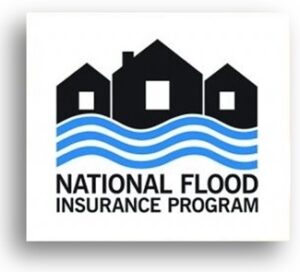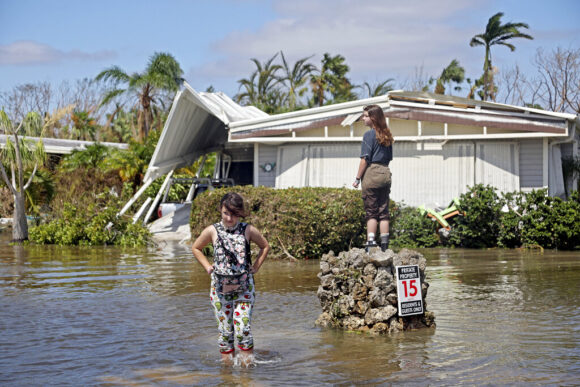Florida property owners stuck with higher premiums and new flood insurance mandates may want to nudge their local governments to take a look at the town of Cutler Bay and the counties of Monroe, Pinellas and Ocala.
Those jurisdictions are among just 17 across the country that have achieved a Class 3 rating from the Federal Emergency Management Agency, which results in 35% discounts on flood insurance premiums for homeowners.
In Cutler Bay, a storied community on Miami’s southern flank with about 45,000 residents, the average premium dropped by $338 this year. Citywide, that’s a savings of $2.3 million.
“This savings is a tangible result of the flood mitigation activities your community implements to protect lives and reduce property damage,” reads a letter from William Lesser, FEMA’s Community Rating System coordinator.
The rating system and the National Flood Insurance Program have their critics, including those who argue that the system doesn’t go far enough to discourage building in flood zones or to encourage individual property owners to take flood-proofing steps. But some local officials say the rating system and their discounts have become vitally important to homeowners at a time of soaring insurance premiums.

It takes some some sense of urgency, some public expenditures and a little self-owning of a community’s infrastructure problems to achieve the improved rating. Cutler Bay’s experience gives some insight: Just a few years ago, Cutler Bay, hit hard by Hurricane Andrew in 1992, was near the bottom of the ratings, at Class 6.
“Cutler Bay really put their money where their mouth is and decided to leap forward on this,” said David Stroud with WSP USA, an environmental engineering consulting firm that worked with the city.
Facing rising seas, and the likelihood of more rainfall and stronger storms, city staff began working in 2011 to up its game.
“If we can do it with a city staff of just 32 people, anybody can,” said Rafael Casals, town manager.
Besides preserving 44% of the flood hazard area, as designated on flood maps, as open space, one of the most significant measures that Cutler Bay officials undertook required no commitment from builders, developers or homeowners: It was simply maintenance – on an aggressive schedule.
While the surrounding county jurisdiction vacuums out its stormwater drains on an 8-year schedule, Cutler Bay does it every two years: Half the town’s drain lines get cleaned one year and the other half gets it the next year, explained Yenier Vega, stormwater utility manager for the city.
The maintenance plan received a real test in June 2022, when the area received 26 inches of rain in less than three days. While streets flooded for several hours, the water was able to drain away faster, thanks to unclogged drains and sewer mains, officials said in a recent interview with Insurance Journal.
 “It cleared up a lot faster because of all of our action,” Casals said. “It drew attention to how important it is to maintain your stormwater system.”
“It cleared up a lot faster because of all of our action,” Casals said. “It drew attention to how important it is to maintain your stormwater system.”
The cost of the enhanced flood measures has been surprisingly affordable for the city, officials said – less than $100,000 a year, from a town budget of $43 million. Much of the funding for infrastructure improvements have come from federal grants, which are easier to obtain with an improved town master plan.
“The biggest cost is the time it takes,” Vega said. “You have to sit there and go through it all. And when sit there and go through it, you’re going to find deficiencies in your program.”
And that’s part of the reason why more coastal cities, even in the face of dire climate-change warnings, have not taken similar steps, Casals and Vega said.
“A lot of cities don’t like that,” Casals said. “Why? Because you have to expose yourself and show what are your vulnerabilities.”
The measures can also meet with resistance from developers who want to build homes and commercial properties in vulnerable areas.
Private Flood Insurers See Opportunity as NFIP Rates Increase
But in a low-lying area and with new flood insurance mandates, the improvements are worth the headache, town officials said. Parts of Cutler Bay are just 14 feet above current sea level. And the Florida Legislature last year required most properties covered by Citizens Property Insurance Corp. to also obtain flood insurance, regardless of locale.
An estimated 4,000 property owners in Cutler Bay are insured by Citizens, out of about 228,000 Citizens policies for all of Miami Dade.
“When we have to tell developers that they have to build another foot above the base flood elevation, what do you think the pushback is going to be?” Casals asked. “But our town council gets it and they would take that hit.”
The town’s drainage improvements have the added benefit of keeping polluted runoff out of adjacent Biscayne Bay, an already stressed body of water, Vega said.
Still, vacuuming drains, preserving greenspace and raising buildings by just a few feet may be only a short-term balm for a long-term problem that studies show is growing worse by the year. By 2030, much of Cutler Bay will face serious, regular flooding, according to computer modeling done by Climate Central, a nonprofit group of scientists.
Without extensive pumping and inland storage measures, coastal cities’ drainage systems may have nowhere to drain the floodwaters to, no matter how clean the drain lines are, explained Craig Poulton. Poulton is head of Poulton Associates, a private company that writes flood and catastrophe insurance. He has been a staunch critic of the NFIP and the Community Rating System.
Although he and Stroud, of WSP, have said that some models suggest that sea levels may not rise as severely as many studies have predicted, cities like Cutler Bay will still face consequences in coming decades.
The CRS itself is flawed because it undercuts FEMA’s newly established Risk Rating 2.0, which aims to base flood insurance rates more on the risk of individual properties, not area-wide and outdated flood maps, Poulton said.
“It goes back to the old paradigm of ‘everybody gets the same rate,’ only in this case, it’s ‘everybody gets the same discount,” he added.
A house at a lower elevation in a Class 3 community gets the same 35% discount as one that has taken the trouble of raising its foundation by eight feet, he noted. The more at-risk property now has less incentive to reduce flood risk, since the city has reduced its cost of flood insurance.

And while Cutler Bay and Monroe, Pinellas and Ocala counties have taken steps to reach the higher ratings, most communities have not, Poulton pointed out. The majority of cities and counties – 1,485 in all – have settled for lower ratings and smaller discounts, probably because of the commitment and expense involved in upgrading infrastructure and building restrictions, he noted.
“Most communities are like water: They take the path of least resistance,” Poulton said. He added that the time and expense involved in improvements means that most cities aren’t stepping up, yet can still claim some discounts, thanks to the structure of the CRS.
Cutler Bay officials said that FEMA audits their master plan and other improvements, to ensure the city is meeting the Class 3 requirements. But for the lower ratings, FEMA has a history of not stringently enforcing the requirements, Poulton said. Many of the CRS requirements for discounts in the lower ratings do nothing to reduce flood risk for communities and homes, he noted. These include points for simply advertising the need for homeowners to purchase flood insurance.
“If anything, it adds to the burden of the taxpayer, because the property gets discounts on flood insurance from NFIP,” he said.
Still, Cutler Bay’s administrators believe in the rating system and now plan to undertake additional improvements to reach Class 2 – and a coveted 40% discount for most flood insurance policyholders. Only six communities nationwide, none of them in Florida, have achieved Class 2. Just two, Tulsa, Oklahoma, and Roseville, California, have made it to the top rung of Class 1.
“At least for us, we are charting our own course,” Casals said. “Our role is to protect our integrity and provide the best service we can to our residents.”
Was this article valuable?
Here are more articles you may enjoy.



 Howden US Tells Judge Brown & Brown Employees Fled Due to ‘Mistreatment’
Howden US Tells Judge Brown & Brown Employees Fled Due to ‘Mistreatment’  2 New Jersey Pilots Killed in Helicopter Collision Frequented Nearby Cafe Together
2 New Jersey Pilots Killed in Helicopter Collision Frequented Nearby Cafe Together  Cloudy Future for Bourbon Has Jim Beam Closing Distillery for a Year
Cloudy Future for Bourbon Has Jim Beam Closing Distillery for a Year  ’60 Minutes’ Homeowners Ask Court to Force DFS to Divulge Heritage Probe Info
’60 Minutes’ Homeowners Ask Court to Force DFS to Divulge Heritage Probe Info 


